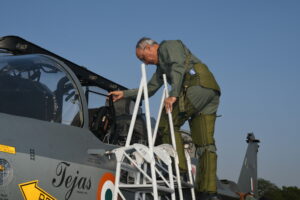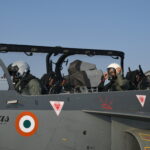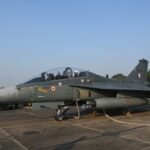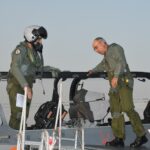NEWS
The defence ministry has cleared acquisition proposals worth ₹2.23 lakh crore for the armed forces, including:-
97 additional light combat aircraft from HAL.
156 light combat helicopters from Hindustan Aeronautics Ltd (HAL).
A ₹65,000-crore plan to upgrade the mainstay Su 30MKI fighter jet fleet in service with the air force.
Q. A multi-billion dollar acquisition was approved by DAC. But what is absent is the AoN for MRFA. Do you think the government sees the indigenous LCA Mk2 as a viable option instead of 114 MRFAs??
COMMENTS
- Over the years the IAF capabilities have enhanced manifold.
- It is the capacity (war endurance) that needs attention, strength of fighter and combat support platforms.
- Overall the deterrence capability has not kept pace with the existing threat perception.
- This aspect needs to be addressed urgently.
- The government is aware of it and trying to address it.
- Air platforms of the Air Force are technology-intensive, costly, and take time to procure.
- While building up the capability and capacity, the most important thing to be kept in mind is that the required minimum deterrence value is to be maintained at all times (either by domestic production or by outside procurement.
- The lesson from all the recent wars is that self-reliance in defence production is essential.
- Another major factor to be considered is that a balance is to be maintained between the quality and quantity of platforms.
- IAF has a drawdown mitigation plan, which is reviewed periodically.
- The amount of money for defence spending is limited and the wish list is long.
- The government must have taken a decision keeping all the above factors in mind.
- They have given preference to the domestic defence industry to build up the numbers.
My recommendations are:-
- While the domestic production of Tejas would cater to the numbers, there is a requirement for newer-generation multi-role aircraft to maintain a balanced force (till the domestic Tejas MkII and AMCA come up).
- MRFA aircraft needs to be procured (maybe in the next instalment of defence spending).
- These should be procured in phases (maybe two to three squadrons at a time.
- This would spread the expenditure over some time and we would get later and better technology and features.
- Keeping the diverse inventory of the IAF and the associated challenges it would be prudent to go in for more Rafael aircraft.
Suggestions and value additions are most welcome
For regular updates, please register here:-
Subscribe
References and credits
To all the online sites and channels.
Disclaimer:
Information and data included in the blog are for educational & non-commercial purposes only and have been carefully adapted, excerpted, or edited from sources deemed reliable and accurate. All copyrighted material belongs to respective owners and is provided only for purposes of wider dissemination.






